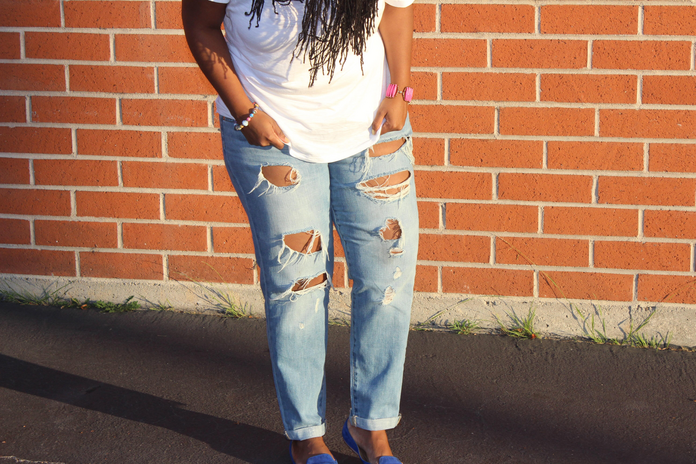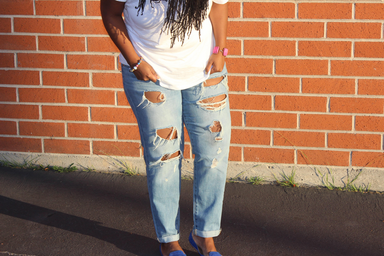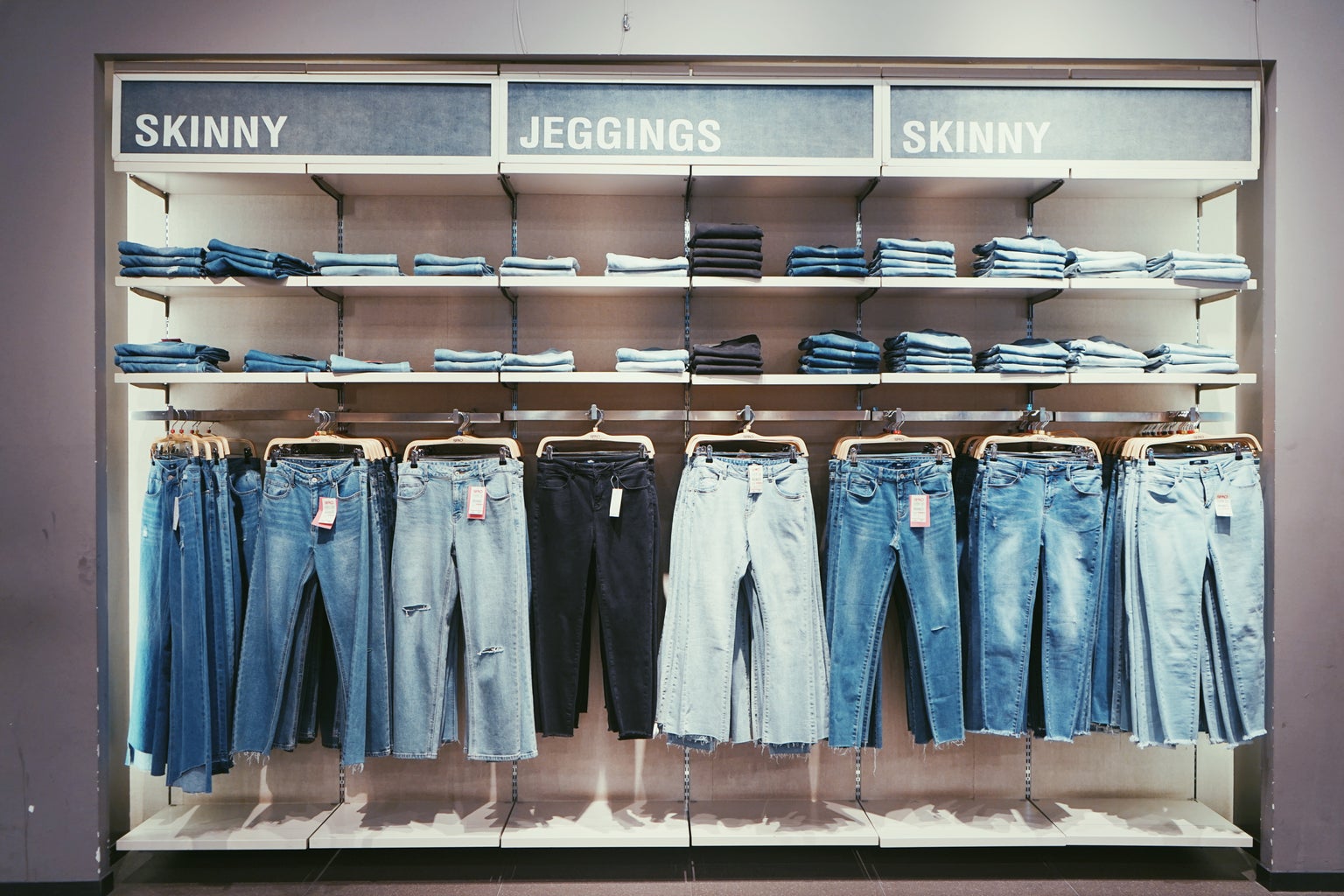I recently encountered a small business that sells hand-made clothes on Instagram. The business is run by one person, selling very intricately designed crochet clothing. It takes days of manual work at the expense of the owner/tailor to make a single piece of clothing.
When I browsed through the sizes, I found out that this business charges incremental prices based on size. For example, a size S top could cost around $100, while a size M would go up to $110, a size L for $120, and so on.
This was my first time seeing clothes priced differently based on size. As a typical size L, my first reaction was to feel upset. As if I didn’t feel insecure about my weight enough, why should I have to pay more to wear the same thing when someone who’s more petite pays less? But then I recognized that this is not something that’s new to the fashion industry. For years, big-name brands have been charging more for plus sizes. And this issue isn’t just about the price; it’s a little more complex than that.
The concept of the “fat tax”
For every industry that sells consumer-centric commodities, the “fat tax” has always been a thing. Companies are charging more for plus sizes (i.e. sizes beyond the standard XS-L) for the same goods or services than straight sizes (XS-L). The most prevalent example of this is clothing – in Britain, consumers were outraged at retailer New Look, when a shopper noticed that a pair of green striped trousers cost 15% more for all sizes above 16. In the United States, Old Navy sold straight-sized T-shirts at $16.99, and plus-sized T-shirts at $19.99.
This pricing system applies to other products as well. For example, airplane seats are one-size-fits-all, meaning that plus-sized individuals are often forced to buy an extra seat. Prices for furniture like beds and mattresses have always increased with size. Similarly, plus-sized individuals have no choice but to buy the biggest and most expensive sizes. And on a more macabre note, even oversized coffins can cost up to $500 more than a regular-sized coffin.
Because of the extra resources needed to produce larger commodities, some feel that the price increase is justified. Making something bigger while maintaining the same production quality requires more time, more materials and more man-hours. These extra costs hinder companies in making a satisfactory profit. Hence, the cost is transferred to the consumer. Plenty of plus-sized individuals say they’re okay with paying more, but as mentioned before, it isn’t just about the price.
The problem with it
No matter how progressive society becomes, it’s hard to deny that it still discriminates against plus-sized individuals, especially plus-sized women. Media outlets and fashion publications leave them out of the beauty narrative far too often. Charging more for plus sizes seems to send the message that bigger women need to do more (or at least pay more) to be as beautiful as petite girls or even straight-sized girls.
Many major clothing brands aren’t size inclusive either. Most stores only carry up to a size XL at best, and the term “free size” has come to simply mean “extra small”. There’s also no standard metric for women’s clothing sizes — you could be a size M for one brand and a size XXL for another. This isn’t the case for men’s sizing, which has a standardized metric, and plus-sized men have noted that plus-sized men’s clothing doesn’t cost more either.
Clothing choices for plus-sized women are limited by price and availability. Brands tell women that fashion is an expression of their identities, but set differently-sized women on unequal playing fields. In the words of a plus-sized shopper interviewed by the New York Times, “It’s almost like the shops are trying to make a point by putting up the price. It’s like they are saying, ‘Lose some weight, love.’ And that’s just mean.”
From a small business’ perspective
For established retail brands like New Look and Old Navy, there’s no excuse for charging extra on plus sizes. Any extra costs they might incur when mass-producing plus-sized clothes are easily evened out due to economies of scale. A big brand probably also has a whole team of market analysts to predict demand and minimize excess stock.
But small businesses face a unique dilemma. Because they typically make products by hand and in small quantities, they don’t have the advantage of economies of scale. They can’t buy materials in bulk, and items are usually slow-made. Paying themselves a liveable hourly wage and accounting for material costs alone already drive prices upwards. When plus sizes require more time and more materials, it’s almost impossible for them to make a profit or break even if they keep prices the same.
Some small businesses say that the alternative to this is to not carry plus sizes in their catalogues at all. But they worry that this would be even more exclusionary. This would mean plus-sized people do not even have the option of wearing a unique, slow-made piece of clothing that they love. Small businesses want to cater to different types of customers, but they also need to work within their means and pay themselves fairly.
So what’s the right answer?
If you need a clear-cut answer, take it from Vogue and Nylon: No, it’s not okay for big clothing brands to charge extra for plus sizes.
But as a follower and supporter of small brands, I can see that they’re always thinking about balancing inclusivity with business sense. It would be unreasonable to expect a small business owner to absorb all the extra costs.
If you’re a small business owner reading this, here are some possible win-win solutions for you.
- You can try charging a standard price that averages out the costs equitably, based on preliminary analysis of your target market and the size range of your customers. This Reddit thread, started by a small business owner, gives you an easy formula to calculate your prices, so it’s fair to anyone of any size.
- Be upfront and ask your customers and followers about their opinions. Thoughts on this topic can differ from person-to-person, so you’ll want to make sure you’re on the same page as your buyers.
Ultimately, do what is necessary for your business, but try your best to be inclusive in the process. Plus-sized individuals are starting to make up a greater percentage of the market, so it’s important to consider their needs, and make sure they get the same opportunities to express themselves through fashion too.






